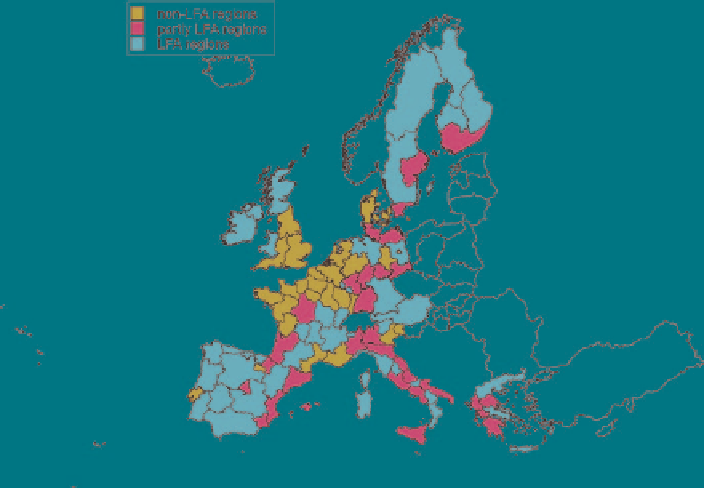Environmental Engineering Reference
In-Depth Information
Typology of LFA and Non-LFA Regions
LFA can be described as areas where agriculture is hampered by slopes or
altitude (mountainous areas), by unfavourable production circumstances
(other LFA) or by environmental restrictions (LFA with specific handicaps). In the
scope of the second pillar of the CAP, farmers in LFA can be compensated for
these difficult production circumstances by means of Compensatory Allowances
per hectare. The aim of the LFA policy is to ensure continued agricultural land
use and, thereby, contributing to the maintenance of a viable rural community,
maintenance of the countryside and maintenance and promotion of (environmentally)
sustainable farming systems (CEU
1999
; CEU
2005)
. The size of the area
designated as LFA varies among Member States. For the design of a LFA
typology, we used the share of LFA farms in the total number of farms in a
FADN region as differentiating characteristic (Terluin et al.
1994)
. We distinguish
three types (Fig.
8.3
):
-
Non-LFA regions (less than 30% of all farms are located in LFA);
-
Partly LFA regions (30-60% of all farms are located in LFA);
-
LFA regions (over 60% of all farms are located in LFA).
Fig. 8.3
Non-LFA, partly-LFA and LFA regions in the EU15, 1990* (Own calculations based on
Eurostat, Luxembourg).
*
1995 for Finland, Sweeden, Austria and Eastern Germany.

